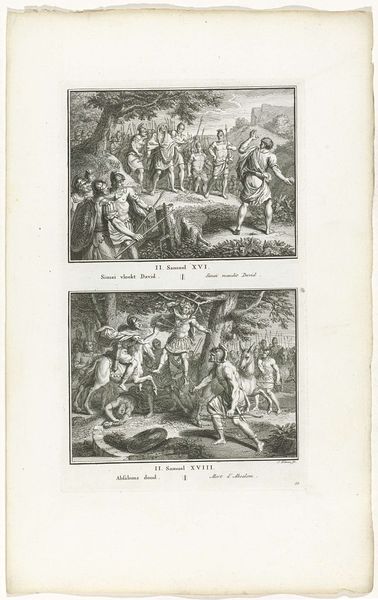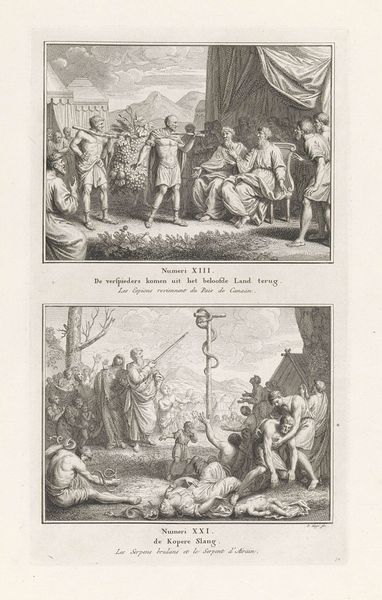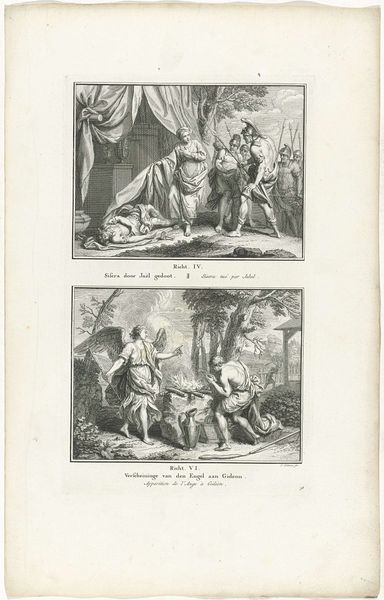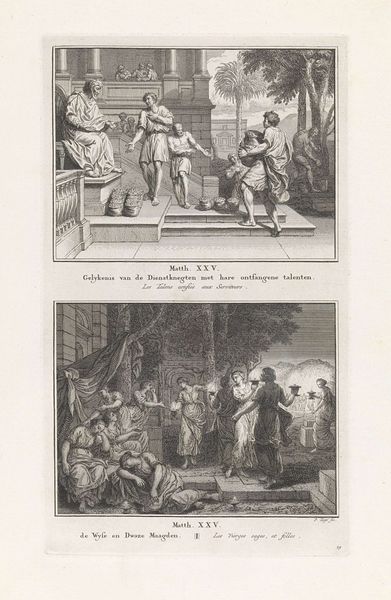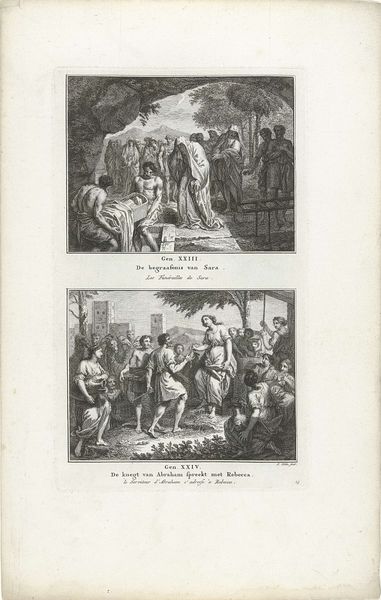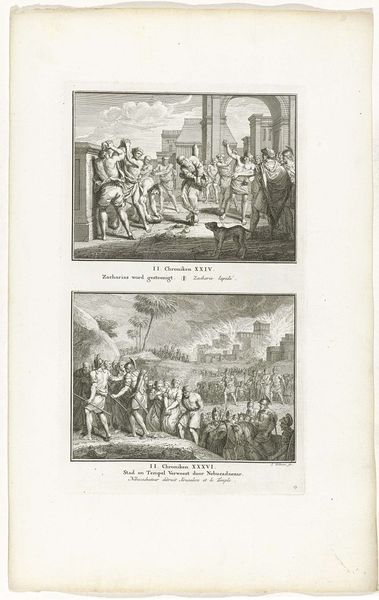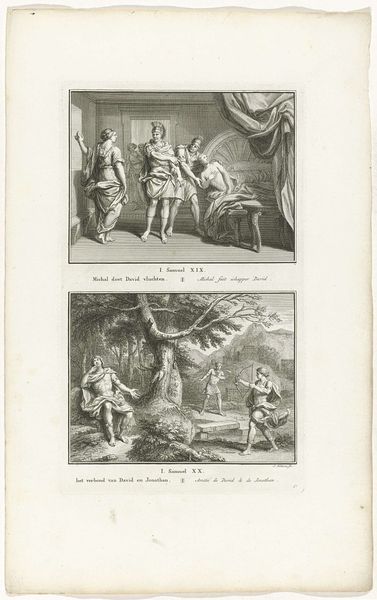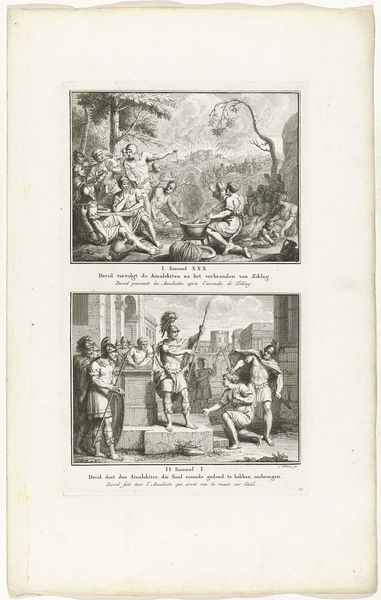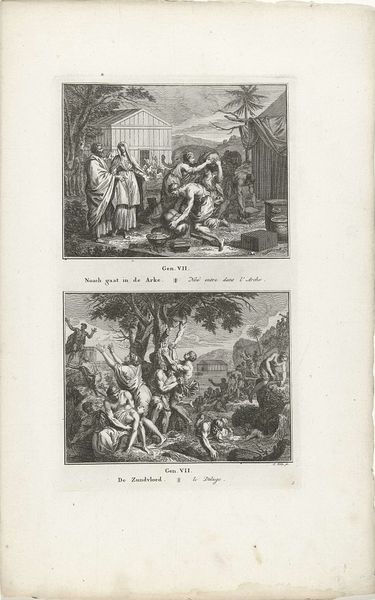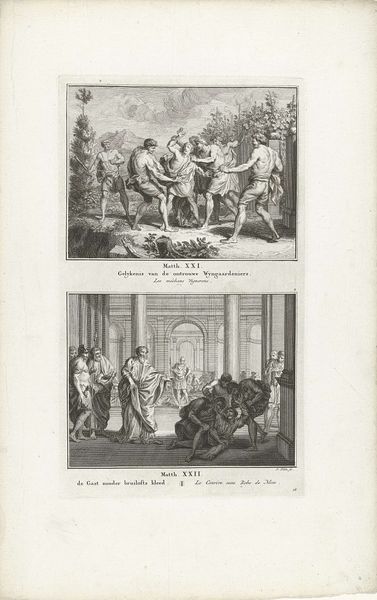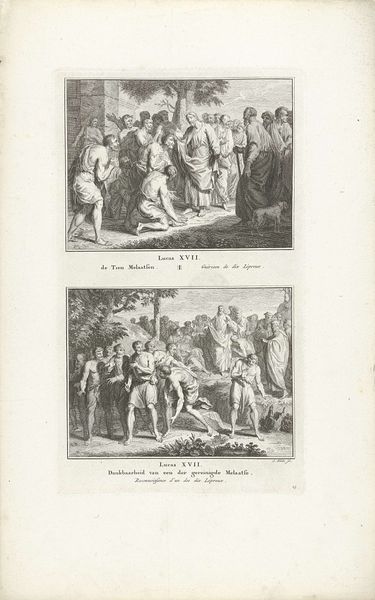
Saulus vervolgt de gemeente in Jeruzalem / Bekering van Paulus 1716 - 1791
0:00
0:00
Dimensions: height 327 mm, width 195 mm
Copyright: Rijks Museum: Open Domain
Editor: This print by Pieter Tanjé, "Saulus vervolgt de gemeente in Jeruzalem / Bekering van Paulus," dates back to the 18th century. The use of engraving is fascinating. What really strikes me is the stark contrast between the two scenes depicted. What stands out to you when you examine it? Curator: What strikes me is precisely the production itself, and the social conditions it implies. An engraving is not merely a representation but a result of labour, a process that consumes materials. Consider the engraver, Tanjé: His hand, the tools he employed, the workshop in which he toiled – these all played a role in constructing these narratives. Editor: So you are seeing more than just the biblical story here? Curator: Indeed! This is a printed image; its purpose was distribution and consumption. The neoclassical elements suggest a targeted educated elite that wants their religious themes couched in a kind of classicizing aesthetic, with an emphasis on human form, and an implicit commentary on the materials involved, paper and ink, produced through particular industrial processes. How did the choice of print as a medium influence its accessibility and reach at that time? Editor: That's a perspective I hadn't considered fully before. I was so caught up in the religious subject that I missed seeing how the print itself was working to convey meaning through its production and consumption. Curator: Exactly. And furthermore, the labor behind creating and distributing these engravings reveals societal values. The scale of production would require division of labor. The paper's production may connect this artwork to the history of that global commodity trade, colonialism and so on. So materiality becomes the foundation for historical awareness. Editor: Thinking about all that goes into making a print like this, it gives the image so much more context. It is great food for thought.
Comments
No comments
Be the first to comment and join the conversation on the ultimate creative platform.
